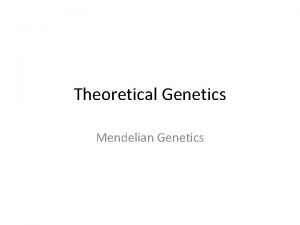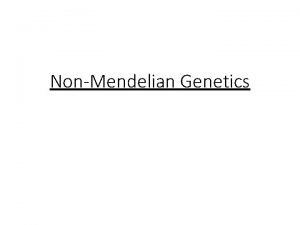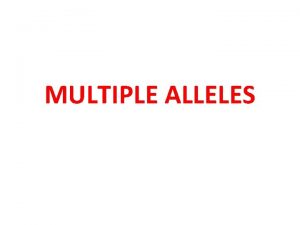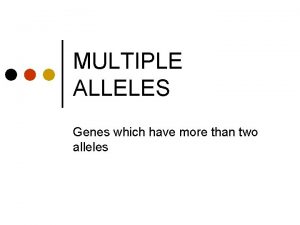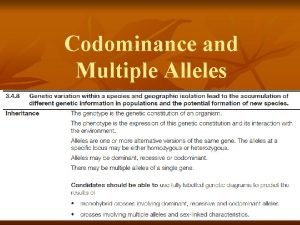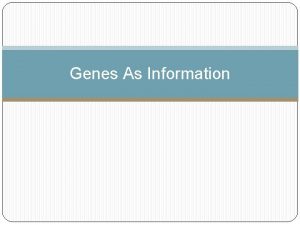MULTIPLE ALLELES Definition Genes which have more than










- Slides: 10

MULTIPLE ALLELES

Definition • Genes which have more than two alleles. • Have 3 or more alleles for the same gene (or at a single locus). • In Other Words – there are 3 or more alleles that create the different traits. • At most one individual will have 2 alleles or 1 pair (unit factors exist in pairs).


Example – ABO Blood Group • The A, B, AB & O are the blood types of human. • Each individual has 1 of 4 phenotypes: – Type A – Type B – Type AB – Type O

• The ABO locus has three common alleles: 1. IA 2. IB 3. IO IA and IB are codominant. IO is recessive.

Why is this called a phenotype and not a genotype? A A A B Both alleles equally expressed (example: blood types— genotype and surface antigens A B B


Donor-recipient compatibility Recipient Type A B AB O A Donor B AB O = Agglutination = Safe transfusion Note: • Type O blood may be transfused into all the other types = the universal donor. • Type AB blood can receive blood from all the other blood types = the universal recipient.

• The ABO locus controls the type of glycolipids found on the surface of erythrocytes apparently by specifying the type of glycosyltransferases synthesized in rbc’s. • The specific types of glycolipids on the rbc provide the antigenic determinants that react with specific antibodies present in blood serum.

• When type A blood and type B blood are mixed, the anti-A antibodies in the type B blood react with the antigens of type A, which produces agglutination or clumping of cells. • Cross-matching to determine compatibility is essential in transfusion.
 Lirik lagu more more more we praise you
Lirik lagu more more more we praise you More more more i want more more more more we praise you
More more more i want more more more more we praise you Blood type codominance practice problems answers
Blood type codominance practice problems answers Linked genes and unlinked genes
Linked genes and unlinked genes Homeotic genes
Homeotic genes Polygenic inheritance
Polygenic inheritance Sickle cell anemia genotype and phenotype
Sickle cell anemia genotype and phenotype Genotype example
Genotype example Combination of alleles
Combination of alleles Codominance
Codominance Multiple alleles genotypes
Multiple alleles genotypes






